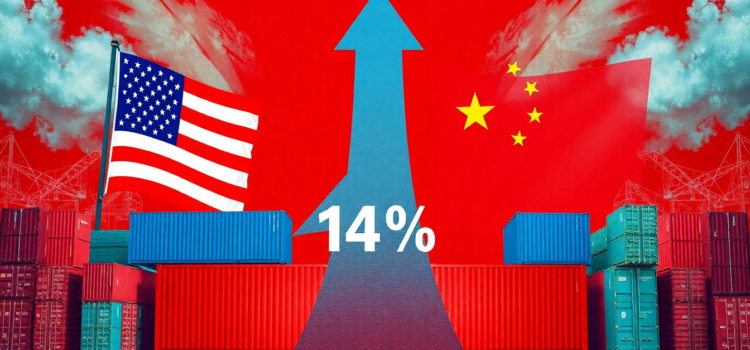
US-China Trade Deal: Tariffs Rise to 145% Amidst Escalating Tensions
Introduction
The ongoing trade tensions between the United States and China have reached new heights with the recent imposition of a 145% tariff on imports from China by the Trump administration. Concurrently, China has retaliated with its own 125% tariff on U.S. goods. These reciprocal measures mark a significant escalation in the US-China trade war, raising concerns about the economic consequences both nations and global markets stand to face.
The Genesis of the 145% Tariff
In early April 2025, the United States implemented a 145% tariff on Chinese imports, excluding some electronics and key tech products initially. Notably, U.S. President Trump suggested potential reductions in the tariff rate but firmly stated that complete elimination was not an option. This strategic move aims to coerce China into trade negotiations; however, Chinese officials have termed such claims ‘groundless’ and demand a removal of unilateral tariffs before any talks can proceed.

Economic Impact of Escalating Tensions
The repercussions of these tariffs are already manifesting in trade and economic indicators:
- U.S. exports to China reduced by up to 30% since January 2025.
- Blank sailings from China to the U.S. East Coast increased by 100%; to the West Coast by 31%.
- Chinese exports surged by 12.4% year-on-year in March 2025, largely due to anticipatory shipments ahead of the tariff hike.
- China cut down on oil imports from the U.S. by 90%, redirecting imports to Canada.
Industries Most Affected
Several industries are feeling the impact of this tariff escalation acutely, including:
- Consumer electronics
- Automotive
- Textiles
- Agriculture
- Chemicals and Pharmaceuticals
- Luxury goods
Companies are leveraging exemptions, reclassifications, and routing trade through third countries as strategies to mitigate the high tariffs’ impact on global trade, but uncertainty remains prevalent in global supply chains.
The Path Forward: Prospects for a New Trade Deal
Despite talks of possible easing measures from the U.S. side, formal negotiations between the countries appear stalled. Chinese foreign and commerce ministries publicly denied any ongoing negotiations, adding complexity to the situation. The sustained trade dispute elevates risks of recession and inflation in the U.S. and poses threats to China’s GDP growth, projected at 4.2% for 2025, possibly necessitating economic stimulus actions.
Conclusion
The escalation in tariffs between the U.S. and China accentuates the fragility of global trade relations. As both countries navigate this economic standoff, industries and markets globally must brace for an era of volatile trade policies. Understanding and adapting to these changes is essential for stakeholders involved in international trade.
For updates on the US-China trade war, stay informed and engaged with ongoing developments.
Frequently Asked Questions (FAQ)
What is the current status of the US China trade deal?
The recent tariff increases have stalled further negotiations, with China demanding the lifting of all unilateral tariffs before resuming talks.
When were the new US China tariffs 2025 announced?
The U.S. tariffs were implemented in early April 2025, marking a significant escalation in trade tensions.
What is the impact of the 145% tariff on Chinese goods?
The tariff primarily affects a wide range of imports, excluding some key tech products, leading to cost increases across various industries.
Why are US China relations experiencing escalating tensions?
Differences in trade policies and tariff strategies contribute significantly to the growing rift between the two nations.
What is Trump’s stance on China trade negotiations?
President Trump has signalled a willingness to reduce the tariff rate but maintains that it cannot be fully eliminated without concessions from China.
How might tariffs impact the US economy?
Higher tariffs typically lead to increased costs for businesses and consumers and can drive inflationary pressures and recession risks.
How has China responded to recent US tariffs?
In response, China has imposed a retaliatory tariff of 125% on U.S. imports while reducing its reliance on U.S. goods, notably by decreasing oil imports by 90%.
What are the latest trade war updates 2025?
Currently, there is no verified progress on negotiations, with both countries adopting retaliatory tariff measures without a disclosed timeline for resolution.
How do US China import export restrictions affect global trade?
The high tariff measures contribute to global market volatility and disruptions in supply chains, affecting trade relations worldwide.










Comments